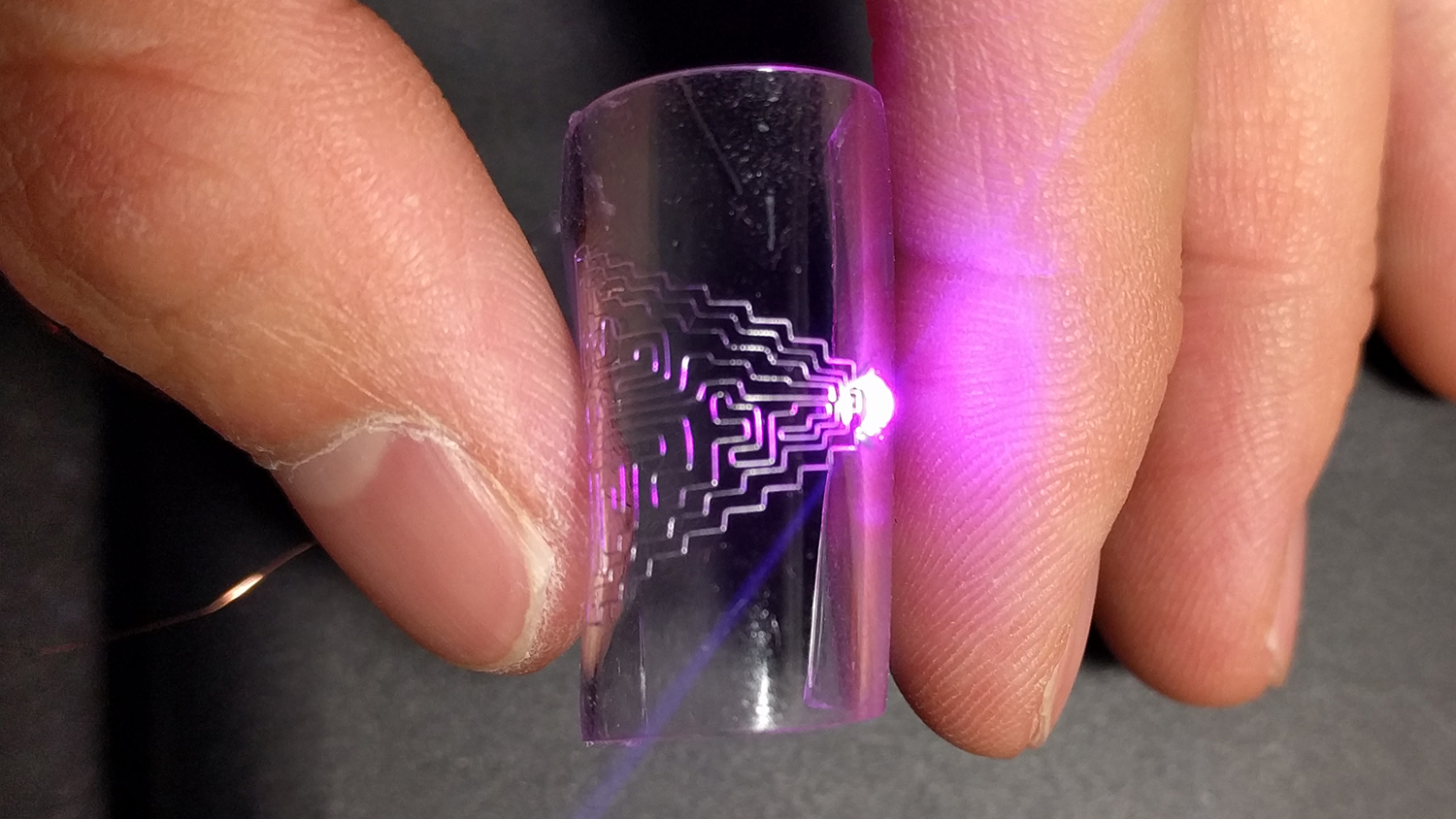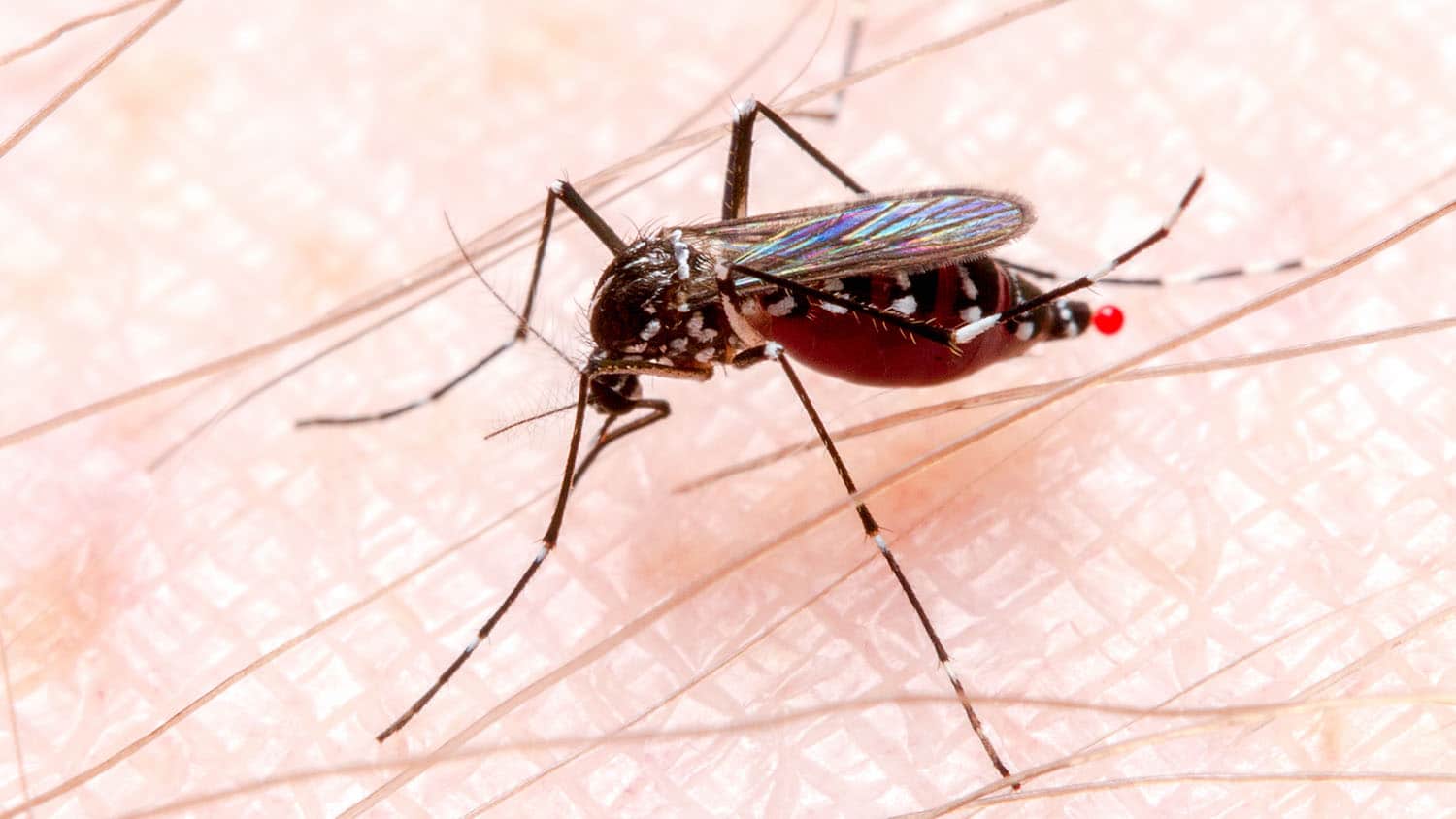Metal Printing Offers Low-Cost Way to Make Flexible, Stretchable Electronics

For Immediate Release
Researchers from North Carolina State University have developed a new technique for directly printing metal circuits, creating flexible, stretchable electronics. The technique can use multiple metals and substrates and is compatible with existing manufacturing systems that employ direct printing technologies.
“Flexible electronics hold promise for use in many fields, but there are significant manufacturing costs involved – which poses a challenge in making them practical for commercial use,” says Jingyan Dong, corresponding author of a paper on the work and an associate professor in NC State’s Edward P. Fitts Department of Industrial & Systems Engineering.
“Our approach should reduce cost and offer an efficient means of producing circuits with high resolution, making them viable for integrating into commercial devices,” Dong says.
The technique uses existing electrohydrodynamic printing technology, which is already used in many manufacturing processes that use functional inks. But instead of ink, Dong’s team uses molten metal alloys with melting points as low as 60 degrees Celsius. The researchers have demonstrated their technique using three different alloys, printing on four different substrates: one glass, one paper and two stretchable polymers.
“This is direct printing,” Dong says. “There is no mask, no etching and no molds, making the process much more straightforward.”
The researchers tested the resilience of the circuits on a polymer substrate and found that the circuit’s conductivity was unaffected even after being bent 1,000 times. The circuits were still electrically stable even when stretched to 70 percent of tensile strain.
The researchers also found that the circuits are capable of “healing” themselves if they are broken by being bent or stretched too far.
“Because of the low melting point, you can simply heat the affected area up to around 70 degrees Celsius and the metal flows back together, repairing the relevant damage,” Dong says.
The researchers demonstrated the functionality of the printing technique by creating a high-density touch sensor, fitting a 400-pixel array into one square centimeter.
“We’ve demonstrated the resilience and functionality of our approach, and we’re open to working with the industry sector to implement the technique in manufacturing wearable sensors or other electronic devices,” Dong says.
The paper, “Electrohydrodynamic (EHD) Printing of Molten Metal Ink for Flexible and Stretchable Conductor with Self-Healing Capability,” is published in the journal Advanced Materials Technologies. Lead author of the paper is Yiwei Han, a Ph.D. student at NC State. The work was done with support from the National Science Foundation under grant numbers CMMI-1333775 and CBET-1344618.
-shipman-
Note to Editors: The study abstract follows.
“Electrohydrodynamic (EHD) Printing of Molten Metal Ink for Flexible and Stretchable Conductor with Self-Healing Capability”
Authors: Yiwei Han and Jingyan Dong, North Carolina State University
Published: Dec. 20, Advanced Materials Technologies
DOI: 10.1002/admt.201700268
Abstract: Direct printing of flexible and stretchable conductors provides a low-cost mask-less approach for the fabrication of next-generation electronics. In this work, an electrohydrodynamic (EHD) printing technology is studied to achieve high-resolution printing of low-melting-point metal alloys, which enables low-cost direct fabrication of metallic conductors with sub 50 µm resolution. The EHD printed microscale metallic conductors represent a promising way to create conductive paths with metallic conductivity and excellent flexibility and stretchability. A stable electrical response is achieved after hundreds of bending cycles and during stretching/releasing cycles in a large range of tensile strain (0–70%) for the printed conductors with properly designed 2D patterns. Due to the low melting point of the metal alloy ink, the printed conductor demonstrates self-healing capability that recovers from failure simply by heating the device above the eutectic temperature of the metal ink and applying slight pressure. A high-density touch sensor array is fabricated to demonstrate the high-resolution capability of the EHD printing for the direction fabrication of flexible and stretchable devices.
- Categories:


